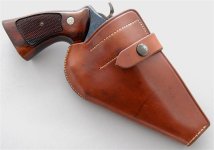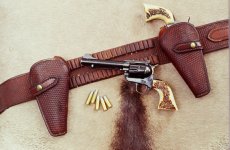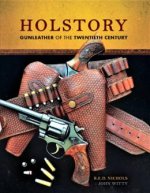OP
beetledude
Member
- Joined
- Aug 15, 2013
- Messages
- 48
- Reaction score
- 671
I guess what I am saying is that there have been several nice firearms I have passed up, not because I cannot afford them, just because I think the price is too high for what it is. Just a matter of opinion...
Hi. I too have passed on firearms because I thought the price was too high for what it was. but in my opinion this was a special situation. If this was just a "regular" triple lock then I would have only paid what I thought the market value was.
But the question is, are these "regular" triple locks? I think it depends on what value you place on the Keith ownership. To some it won't matter and those people will only pay the market rate. To others (me included) the Keith ownership is huge and adds a significant premium.
Kind of like asking if a 1911 owned by John Moses Browning is worth more than a regular 1911. To some, no. To others (me included) Yes!
I have posted answers to questions like these in several threads and will reply here as well.
1. To someone making $10/hour at the local Dunkin Donuts, prices paid for a registered magnum or the OP's guns seem like lottery numbers. To the guy that just sold his dot.com company for 6.2 billion to that Japanese conglomerate, it's the pocket change in his left front pocket. It's all relative.
I can assure everyone that I definitely did not sell a company worth $6.2 billion! LOL. Yes I have a good job that affords me the ability to pursue my hobbies, and for that I'm grateful. But this purchase was significant for me. Even still, I don't regret that I did it.
Yes. of course! $39,100 for some folks is a fraction of a day's pay. For others, it is several year's pay. Do I think it is a good investment over the long haul? Probably. Unless, of course, there is little interest in Elmer Keith, or triple locks, in future years, as younger generations flock to plastic firearms...
I think that there will always be interest in fine pieces of art made from steel and wood. If anything, the younger generation is just now discovering the beauty of revolvers. Look at the prices of pythons lately -- they are through the roof!
It comes down to this -- is $39K a lot to pay? Yes, I'm not a billionaire. but for me it was worth it. Unlike other "regular" guns it's not like you can pass because another will come along. when do you think another triple lock with Kearsarge custom stocks that was once owned by Keith AND McGivern will come along?
Anyways no right or wrong answers on this one -- just something that collectors will need to reconcile in their own head.






